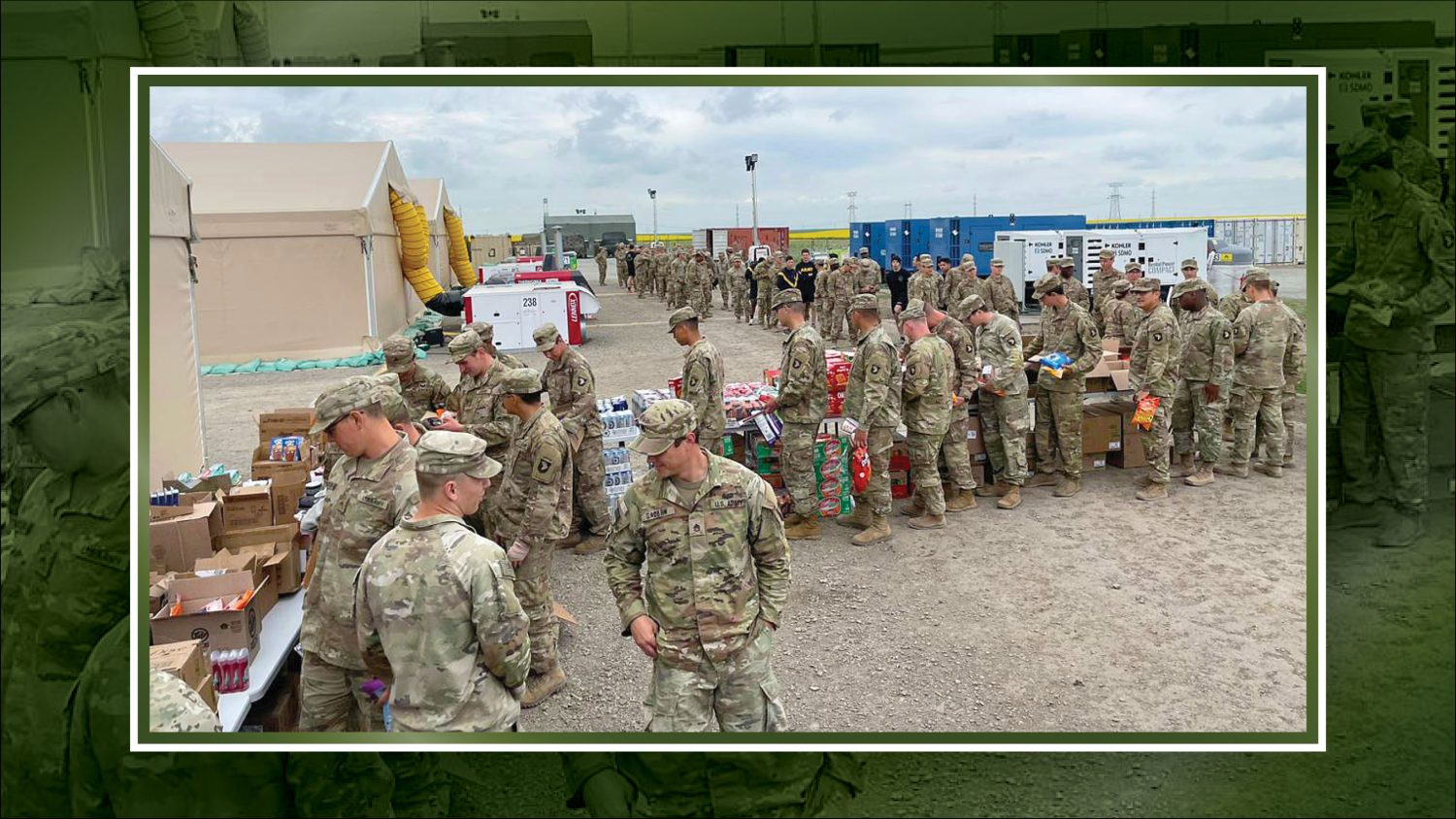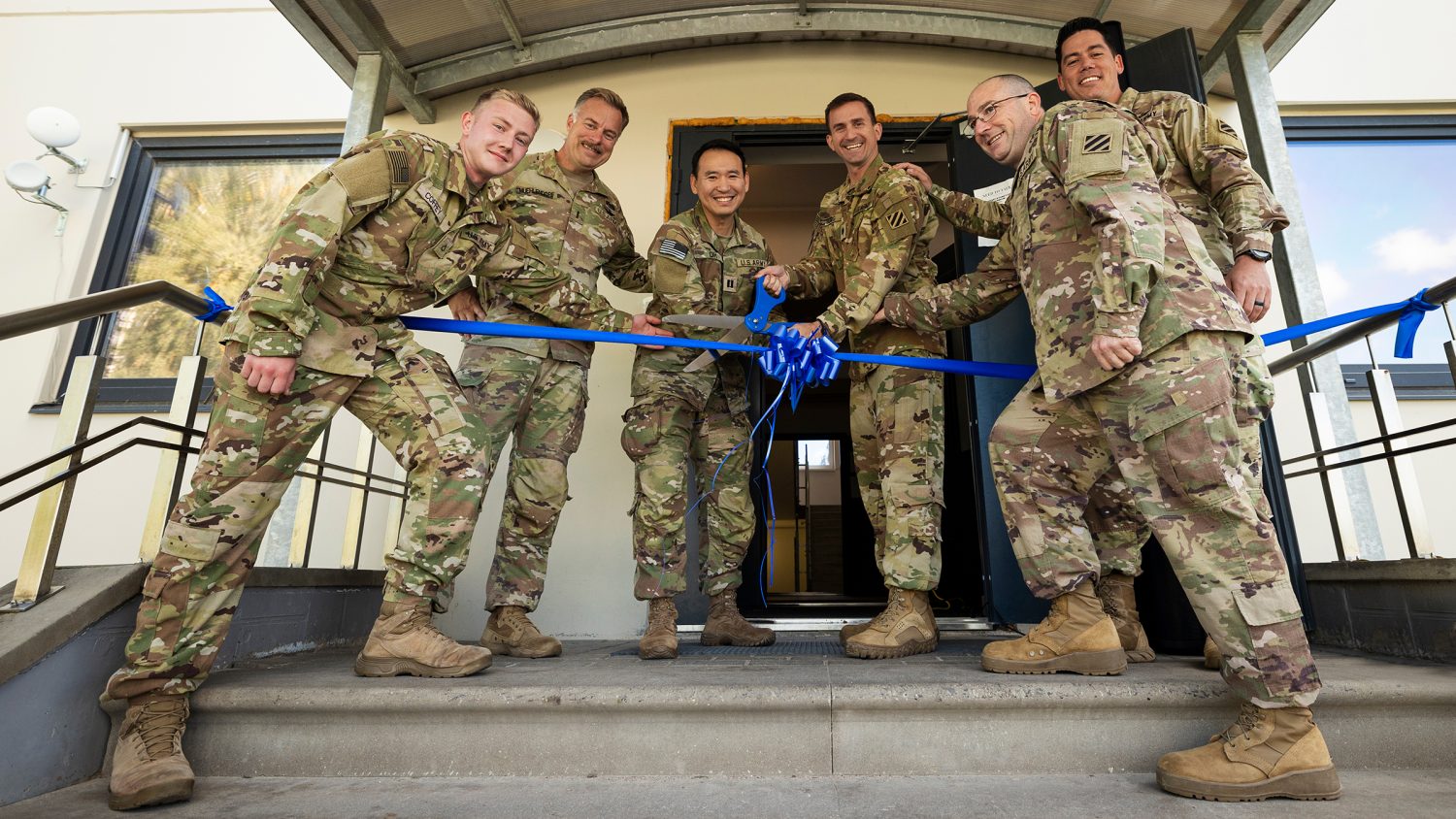Contingency Operations: What it Takes to Support Troops at the Tip of the Spear

In 2023, the Exchange served more than 47,000 Warfighters in Eastern Europe and the Pacific, in remote locations in countries and territories such as Latvia, Kosovo, Guam and many more.
Few things define the Exchange’s motto “We Go Where You Go” like contingency operations support, which make “serving those who serve” happen at the Tip of the Spear.
“For us, contingency is any of the sites where troops go for rotations,” said Ricky Finley, Contingency Operations Liaison for Europe. “Most of the locations are training areas—Bulgaria, Romania, elsewhere in Eastern Europe. Troops go there for six to nine months, depending on which Service it is. There’s no main operation or base.”
Support often comes in the form of a mobile field Exchange (MFE), usually a semi-truck trailer offering hygiene necessities as well as snacks and beverages that provide troops a taste of home. When command at a contingency location makes an official request for support, Finley’s team works to quickly fulfill the request.

101st Airborne Soldiers line up at a rodeo in Smardan, Romania, in 2023. Rodeos, temporary stores that serve troops in remote locations, are just one form of contingency operations support at the Tip of the Spear.
“We have to be able to get merchandise from the Dan Daniel Distribution Center to the MFEs, and then we have a running assortment that is stocked in the Germersheim Distribution Center (GEDC),” Finley said. “We gather all the items at GEDC, and then the MFE and supply trailers all head to the site at the same time. We work with teams in Logistics, Information Technology, PAR Eastern Europe Support team, Region Retail office, Region Services teams, Loss Prevention if needed, and of course the Exchange that’s running the MFE to coordinate and get it launched.”
Finley says he has data that shows the dollar amount of merchandise his team will need if they’re serving 1,000 people for a certain period, from 30 days up to 180 days. He uses this data when he presents a contingency plan to Europe/SWA Senior Vice President Stephanie Burns, Europe Regional Vice President Michele Weisshaar and Col. Don Nowlin, Europe/Southwest Asia/Africa Region commander.
In Pacific Region, which supported 12 exercises in 2023 in South Korea, Japan, Guam and Hawaii, contingency support is a little different.
“Contingency support is likely accomplished by providing food trucks, mobile deliveries, unit purchases, increased merchandise volumes on request or BOPIS [buy online, pick up in store]] orders,” said Lt. Col. Lanelle Pickett Jr., deputy commander for Pacific Region. “PAC does not currently have an MFE, but two MFEs are in development to support the region and are expected to reach completion in late ’24-early ’25.” Pickett added that a new tactical field Exchange, the NWF TFE Express, opened at Andersen AFB on Guam in December.
In 2023, the Exchange supported eight military exercises across 10 countries in Europe. Among the challenges Finley’s team faces are the variations in customs and defense agreements while working in so many countries. There are also challenges in geography and terrain.
“When Operation Europe Assure-Deter and Reinforce first started in Poland near the Ukrainian border, these guys were in the middle of a cow field,” Finley said. “Army trucks were leaving knee-deep trenches when they pulled in. When I do a site survey, I verify whether there will be any road restrictions for LG coming in. I do a site survey of the ground for water, drainage, weight capacity—the way Poland’s terrain is, up north it’s sandier, down south it’s wetter. We don’t always get a hard stand or gravel; so that could be a requirement for the requesting unit to improve the ground. We can’t have an MFE sink four feet into mud.”
In a region as diverse and spread out as PAC, the challenges are also diverse.
“Without having MFEs within the PAC region, large-scale or responsive support is limited in remote areas,” Pickett said. “Remote areas include multiple locations separated by water, adding to logistics complexity and requiring intermodal transport. Previous MFE requests required support from the HQ Contingency team and involved plans to source the MFEs stateside, then loading trailers and merchandise on military charter vessels for transport to their destination.”
Other forms of support in Europe include “rodeos,” temporary stores that serve troops in remote locations. Rodeos support sites that have small troop levels or short durations. In 2023, the Exchange conducted new rodeo missions in Kosovo and Romania.
“Troops are always happy to see us,” Finley said. “The first time we went to Mielec in Poland, we had 500 troops line up—at night. We were doing a rodeo at night using car headlights so that the troops could see. The second time we went, we had 400 in line. We made a six-hour drive, then did an almost 12-hour operation.”

From September 2023: Troops cut the ribbon on an Exchange at Lielvārde Air Base in Latvia. From left: PFC Coffey, CW4 Josh Muehlendorf, 3rd Combat Aviation Brigade S1 Capt. Brian Oh, LTC Lukas Berg, CSM John Frey and SSG Demasi. The store operates as an imprest fund, meaning the unit runs the store with merchandise supplied by the Exchange.
Another form of support is an imprest-fund site, which is set up and supplied by the Exchange, then transported, housed and run by troops. The Exchange currently has 13 imprest-fund sites in Africa, Southwest Asia and Europe, including one that just opened in Świętosów in southwest Poland. Imprest-fund sites are a vital contingency support operation that the Exchange provides to military units in small, remote, short-term or high-risk locations.
The Exchange works closely with units when setting up an imprest-fund site. “When we receive a request, we start working with the unit,” Finley said. “They’re required to produce a concept of operation (CONOP), which explains how they’re going to run the operation. From there, they move Exchange merchandise to their site, and then we’ll test the concept to make sure the site doesn’t fail by conducting an ROC [rehearsal of concept] drill. With that drill, we go through everything that goes into running a store. There’s a whole process to make sure it operates efficiently.”
Although most contingency operations focus on support in downrange locations, CONUS contingency operations have also supported troops working on storm damage recovery, as well as during events such as Operation Allies Welcome and DoD actions responding to the COVID pandemic.
“My office gets various requests or inquiries that essentially say, ‘I’ve got a non-standard thing happening at my location’,” said Vice President of Contingency Plans Col. (Ret) Roger Neumann. “We’ll discuss what the new retail requirement is and, more important, what’s the expected outlook in supported population. We also need to know how close a proposed location is to existing facilities and how long the players will be there.”
Because contingency teams must often adapt to the unexpected, ingenuity is important. During Operation Allies Welcome, which supported at-risk Afghan guests while they completed steps to resettle in the United States, MFEs were in high demand. But some sites needed more.
“Putting three or four MFEs side by side does not equal a main store,” Neumann said. “We negotiated to flex into a new tent that was built into a tent-city plan. Exchange site representatives would say, ‘Great—give us a fest tent like the other rows of fest tents here and that can be our space.’ They were hard sites with climate control, power and lockable doors so inventory could be left there overnight.’”
For a look at what contingency operations supported in 2023, check out the Tip of the Spear 2024 video that premiered on opening day of this week’s Retail, Food and Service Managers’ Conference.
Check out all the coverage from the 2024 Managers’ conference:
Director/CEO Tom Shull Opens Managers’ Conference With Message of Unity, Strength
Four Exchanges Awarded Director/CEO Cup as Top Stores Worldwide
From the Managers’ Conference: Winners of the COO X, Building the Bench, Services and UROC Awards
From the Managers’ Conference: Honoring the Memory of Robin Williams, an Exchange Hero
Follow @exchangeassoc on Facebook, Instagram and X.






Outstanding!